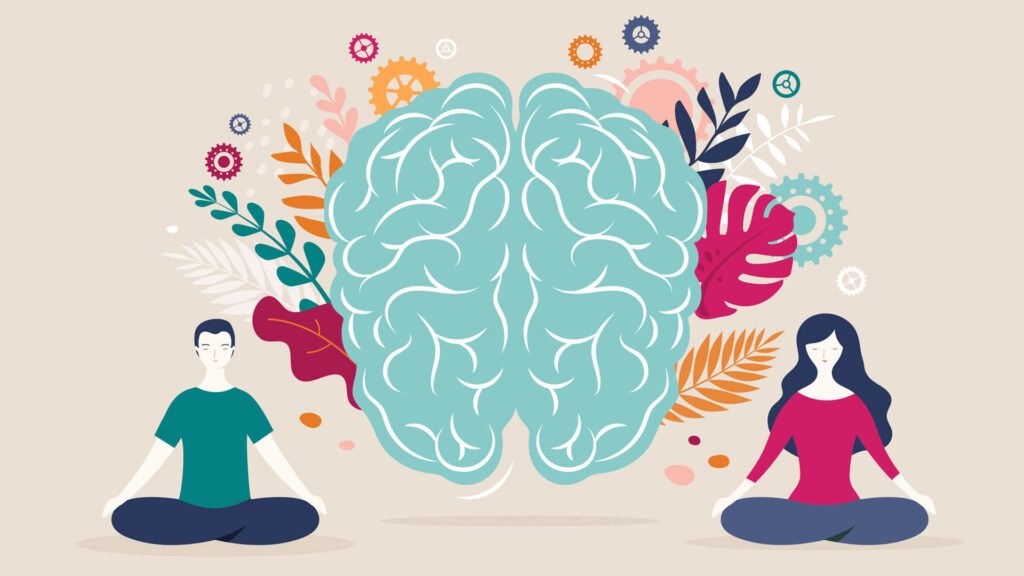Mental Health and Well-being in Schools importance of mental health and wellbeing in schools has increased significantly in recent years. Educators and mental health specialists are struggling with how best to serve pupils as the youth mental health epidemic worsens. The current crop of student challenges, including social media, family issues. Academic pressure, and the worldwide pandemic, has highlighted the necessity of a comprehensive approach to mental health in educational environments. Schools are increasingly seen to be essential settings for fostering emotional, social, and psychological well-being. Despite originally being thought of as exclusively academic learning environments.

The Importance of Mental Health in Schools
Student success depends just as much on their mental health as their academic performance. Students who are in a good mental state are better able to concentrate, form bonds with others, and handle the pressures of social contact and education. On the other hand, poor mental health can lead to behavioral disorders, long-term psychological problems, absenteeism, and poor academic achievement. Since schools are places where young people spend a large amount of time during critical developmental stages, they have a big influence on how students feel about their mental health.
The Growing Mental Health Crisis Among Students
Young people’s mental health issue has gotten alarmingly bad. Numerous research indicate that among school-age children, anxiety, despair, and stress are rising. According to estimates from the World Health Organization (WHO), 10–20% of children and adolescents worldwide suffer from mental health issues. However, a lot of kids do not get the assistance they require.
There are numerous reasons behind the increasing mental health problem in schools, including:
Academic Pressure: The amount of academic pressure placed on students today is unparalleled. Students may become overwhelmed by their fear of failing in a setting where performance standards, college admissions, and standardized testing are in place.
Creating Supportive Environments: The Role of Schools
In order to effectively address the mental health needs of adolescents, schools must take a multifaceted strategy involving instructors, counselors, parents, and the students themselves. Prioritizing mental health as a component of total student well-being is a priority in a supportive educational setting.

Mental Health Education and Curriculum Integration
Integrating mental health education into the curriculum is one of the best methods to address mental health in the classroom. Courses specifically on mental health issues can be offered, or they can be integrated into other courses like social studies. Early education about emotional control, coping mechanisms, and the value of mental health promotes normalization of mental health discussions among students.
Programs for mental health literacy may include:
Stress Management Techniques: Teaching pupils useful coping mechanisms to deal with stress, such as breathing techniques, time management, and mindfulness.
Emotional intelligence is the capacity to identify and control one’s own emotions as well as those of others and to develop empathy.
Training for Teachers and Staff
Teachers and other school personnel play a crucial role in recognizing and treating mental health concerns in students since they are frequently the first to detect behavioral abnormalities in students. But a lot of teachers don’t have the skills necessary to deal with these problems well.
Educating educators on mental health issues prepares them to:
Early indicators of mental health problems should be recognized, such as withdrawal, irritation, or a drop in academic performance.
As a suitable response, start encouraging dialogues with the pupils.

Counseling and Mental Health Services
One essential part of mental health care in schools is counseling services. Psychologists, social workers, and school counselors can give crisis intervention, individualize support programs for students who are struggling, and provide direct services to students who are in need.
Peer counseling initiatives are also successful in certain schools. By giving advice on where to get help and creating a secure environment for conversations, these programs teach kids how to support their friends. Because students may feel more comfortable opening up to a fellow student than to an adult, peer programs can be especially helpful.
Mental Health Policies in Schools
Entire-scope mental health policies guarantee that educational institutions have the structures and materials required to properly assist pupils. The promotion, prevention, intervention, and crisis management of mental health are frequently covered under these policies. Important components of school mental health policies consist of:
Access to Mental Health Services: School policies ought to guarantee that every pupil has the opportunity to obtain mental health professionals and counseling services. In certain situations, schools might have to collaborate with nearby health organizations to offer services.

Conclusion
The increased emphasis on mental health and wellbeing in schools is a reflection of a wider knowledge that education is about developing the full student, not just the academic. Schools are vital to the long-term growth and achievement of kids because they attend to their emotional, psychological, and social requirements.
FAQs
Why is mental health important in schools?
Because it has a direct impact on students’ capacity to study, engage with others, and acquire life skills, mental health is extremely important in schools. A person’s poor mental health can cause long-term emotional hardships, behavioral problems, and academic difficulties. Students who get mental health education in the classroom are better prepared to excel intellectually and have the emotional fortitude necessary to overcome obstacles in the future.
What are the common mental health issues faced by students?
Anxiety, despair, stress, bullying (both offline and online), and social isolation are among the main problems that students deal with. Identity exploration, familial stress, and academic pressure are additional obstacles that may exacerbate mental health issues.
What role do teachers play in supporting student mental health?
Instructors are frequently the first to identify behavioral shifts in their students. They are essential because they identify the early warning signals, provide a welcoming and inclusive learning environment, and connect pupils with mental health professionals like psychologists or school counselors. In order to support students’ emotional wellbeing, educators can also include social-emotional learning into their curricula.
How can schools promote mental health among students?
Schools can support mental health by implementing a number of programs, such as:
adding instruction on mental health to the curriculum.
granting access to psychologists and school counselors.
fostering an accepting and constructive educational climate that forbids bullying and encourages compassion.
putting in place social-emotional learning (SEL) initiatives that instruct pupils in relationship-building and emotional control.
What is social-emotional learning (SEL), and why is it important?
The purpose of social-emotional learning (SEL), an educational strategy, is to assist students in becoming more self-aware, in controlling their emotions, in setting goals, and in creating healthy relationships. SEL improves kids’ mental health and academic performance by giving them the emotional and social skills they need to succeed in both school and life.



